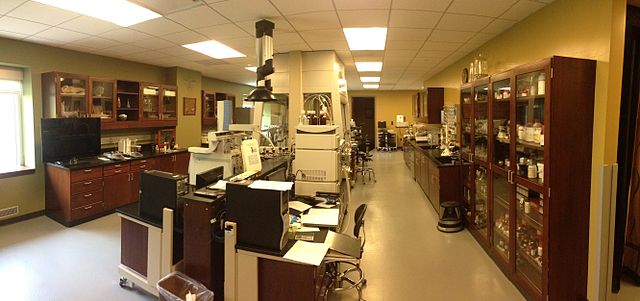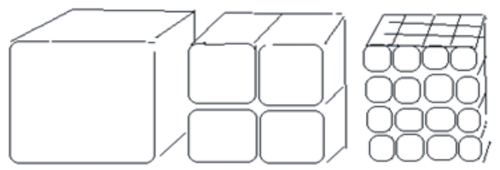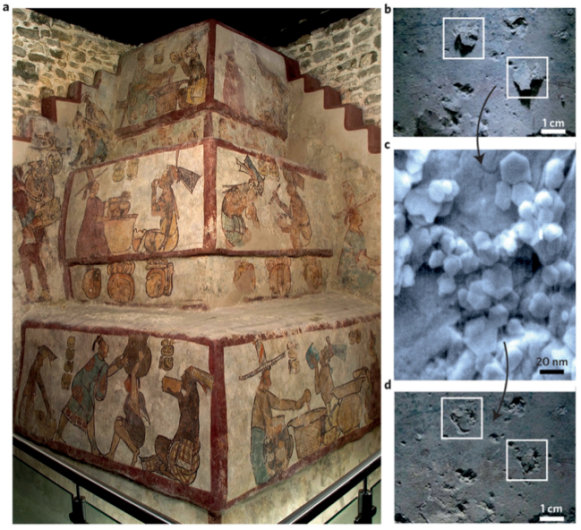Art is a language that can transcend geographical, cultural, and chronological boundaries, and helps us explore the legacy of our shared humanity and creativity. Thomas P. Campbell, the 9th director of The Metropolitan Institute of Art, said it well in his TED talk:
Bringing people face-to-face with our objects is a way of bringing them face-to-face with people across time, across space, whose lives may have been very different to our own, but who, like us, had hopes and dreams, frustrations and achievements in their lives, and I think this is a process that helps us better understand ourselves, helps us make better decisions about where we are going.
The use of art as a means of connecting people is something that is increasingly relevant in today’s diverse and complicated world, making the conservation and preservation of art all the more important. Art conservation unites the fields of arts and sciences, in the pursuit of salvaging centuries old artworks, as well as protecting them from possible future damage.
But what does this have to do with nanotechnology?

As a student in the Center for Sustainable Nanotechnology (CSN) with an interest in art, I wondered if nanosciences have anything to contribute to the field of art conservation. The Research Center for Colloids and Nanoscience (CSGI) in Italy is exploring some of these possibilities,1-5 and I’ll talk about a few of them in this post.
Nanodroplets for removing oils
One example of art conservation work from the CSGI is oil-in-water nanodroplets called micelles and microemulsions, which have been used to remove dirt and grime from wall and easel paintings. They provide an alternative to hydrocarbon-containing organic solvents like petroleum ether and white spirit, which are less environmentally friendly. They also have the benefit of being highly efficient in the cleaning process. This is because the high surface area of the nanodroplets of organic solvent increases their interaction with surfaces.

This nanodroplet cleaning process was first used for the restoration of paintings in Brancacci Chapel in Florence, Italy. The restorers used hydrocarbon (oil) droplets stabilized in water by substances called surfactants. Surfactants can act as wetting agents by reducing the surface tension between two different liquids (in this case oil and water). The grime (wax in this case – another type of hydrocarbon) was removed and confined inside the oil nanodroplets. (For another example of the chemical rule of “like dissolves like,” check out this blog post.)

Nanocontainers for flaky paint
Another application of nanotechnology in art conservation has to do with repairing flaky paint. Flaking can happen in old paint due to degradation of binders within the paint. Synthetic polymers have been widely applied to artifacts since the 1960s to consolidate flaking and detaching paint because they are good adhesives, easy to use, and leave the original intensity of the colors unaffected. However, the use of synthetic polymers can actually cause as more harm than good, particularly for wall paintings, because they can physically stress the surface of the paint, resulting in more flaking, chipping, and removal of the paint. Also, these polymers can degrade over time with exposure to light and air, causing yellowing and brittleness of the painting.
To repair some damage caused by these problematic synthetic polymers, restorers used a water-based microemulsion system containing water and chemicals called esters along with surfactants. They successfully removed old acrylic–vinyl copolymers that had been applied to Maya and Nahua murals in the archaeological sites of Mayapan and Cholula in Mexico.2 The nanosized containers of the organic esters are very effective in interacting with the flaking polymer coating, and detaching them from the surface. This system was also successfully used in removing a commercial polymer coating that had been applied in the 1970s to preserve the paintings of the Annunciation Basilica in Nazareth (Israel) depicting the Garden of Eden.

Nanoparticles to restore artifacts and bones
Hard, inorganic nanoparticles such as calcium hydroxide and silica nanoparticles are also being used in various art restorations alongside the nanodroplet emulsions because they are very stable. When applied on porous artifacts and paintings, calcium hydroxide (Ca(OH)2) nanoparticles can penetrate the surface because of their small size and high surface interactions. Ca(OH)2 particles can react with atmospheric carbon dioxide (CO2) inside the pores of an object and transform into a new calcium carbonate network to reinstate the mechanical properties of the original artifacts, thereby restoring them and ensuring that generations to come can enjoy these beautiful artworks. This method was used in the consolidation of Mayan wall paintings in Calakmul, Mexico.1

Ca(OH)2 nanoparticles can also be used in restoration to recover bones for archaeology and paleontology research. Decay of ancient bones is based on a mechanism similar to osteoporosis, a condition that typically affects older adults causing brittleness of bones due to loss of calcium. By permeating the bone and reacting with CO2 and trace magnesium, the Ca(OH)2 nanoparticles can simulate and strengthen bone structures.1
Another example of restoring hard surfaces uses a different type of nanoparticles. An older method for restoring stone-based structures like historic monuments, churches and cathedrals uses ethyl orthosilicate solutions, which unfortunately can cause cracking in the materials when they dry. A new alternate method involves adding silica nanoparticles to the ethyl orthosilicate solutions, which can form flexible chain structures that reduce the chances of developing cracks1

Nanotechnology is starting to offer some amazing new advances in our ability to restore and preserve art. However, like with any other application of nanomaterials, we also have to consider issues of environmental release and health implications before we adopt widespread use of these techniques. For example, in some cases, the release of nanoparticles from the silica-based stone artifacts is being controlled by using grafting techniques to stably attach these nanoparticles on the surface. This works by functionalizing the nanoparticles with silica-based groups, which can fuse with the stones. Nanotechnology as an art restoration solution is clearly a promising field, and it will be exciting to watch how it develops in the future.
EDUCATIONAL RESOURCES
- New York Times Learning Network: When Art’s A Craft classroom activity by Alison Zimbalist (not specifically nanotechnology; grades 6-12)
- Journal of Chemical Education: ZnO-Based Sunscreen: The Perfect Example To Introduce Nanoparticles in an Undergraduate or High School Chemistry Lab by Guedens et al. (introduces microemulsions; may require subscription)
REFERENCES
- Baglioni, P.; Carretti, E.; Chelazzi, D. Nanomaterials in Art Conservation. Nature Nanotechnology. 2015, 10 (4), 287–290. doi: 10.1038/nnano.2015.38
- Baglioni, P.; Berti, D.; Bonini, M.; Carretti, E.; Dei, L.; Fratini, E.; Giorgi, R. Micelle , Microemulsions , and Gels for the Conservation of Cultural Heritage. Adv. Colloid Interface Sci. 2014, 205, 361–371. doi: 10.1016/j.cis.2013.09.008
- Baglioni, M.; Giorgi, R.; Berti, D.; Baglioni, P. Smart Cleaning of Cultural Heritage : A New Challenge for Soft Nanoscience. Nanoscale 2012, 4, 42–53. doi: 10.1039/C1NR10911A
- Baglioni, M.; Berti, D.; Teixeira, J.; Giorgi, R.; Baglioni, P. Nanostructured Surfactant-Based Systems for the Removal of Polymers from Wall Paintings : A Small-Angle Neutron Scattering Study. Langmuir 2012, 28, 15193-15202. doi: 10.1021/la303463m
- Baglioni, P., Carrasco Vargas, R., Cordeiro Baqueiro, M. & Chelazzi, D. in Science and Art: The Painted Surface (eds Sgamellotti, A., Giovanni, B. G. & Miliani, C.) Ch. 4, 68–93 (Royal Society of Chemistry, 2014).
- Wheeler, G. & Getty Conservation Institute. Alkoxysilanes and the Consolidation of Stone. Los Angeles: Getty Publications, 2005.
